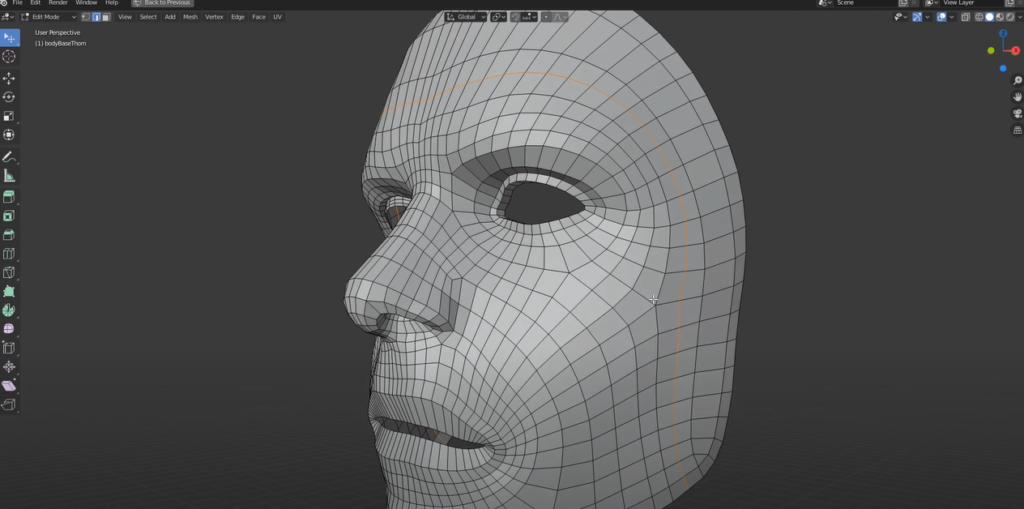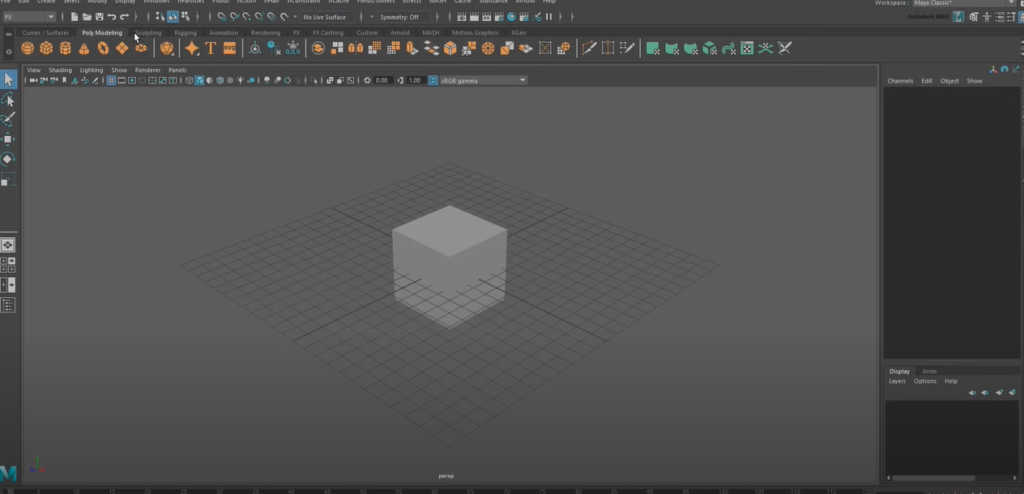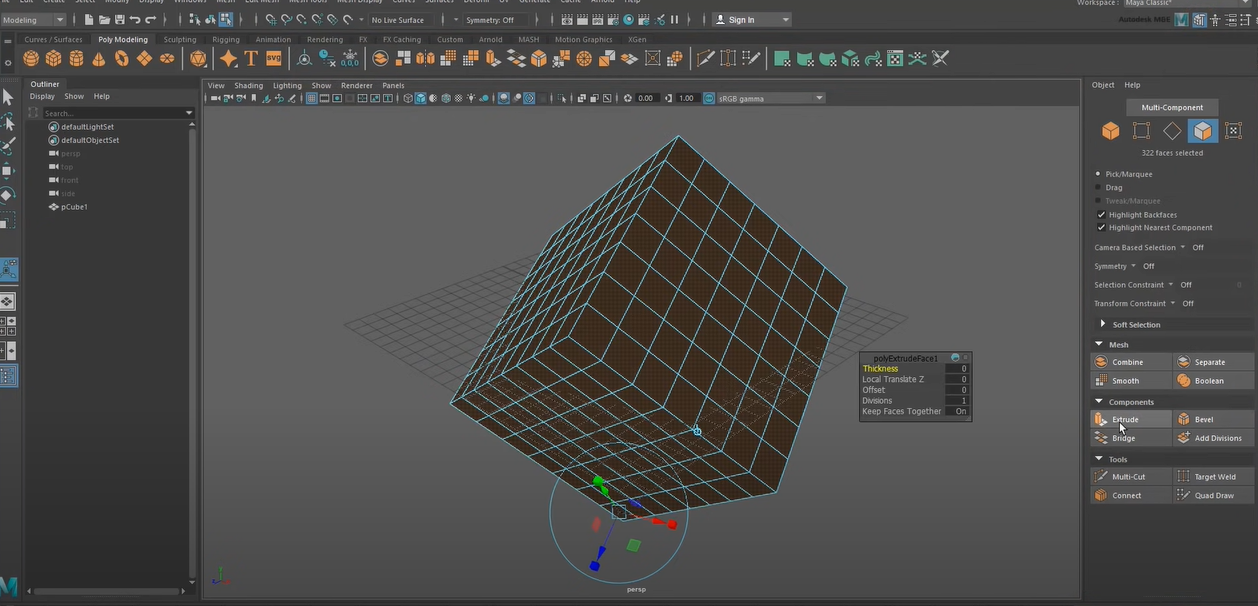Autodesk Maya, or simply Maya, is a premier software platform used by artists and designers to create stunning 3D models, realistic animations, and dazzling visual effects. Its comprehensive feature set and flexibility make it a go-to tool for professionals across industries, from film and television to game development and architectural visualization. Let’s take a deep dive into this influential software and explore how its 3D modeling capabilities help bring imagination to life.
Maya’s Foundation
Maya, introduced by Autodesk, is a leader in 3D modeling and animation. Its diverse capabilities are leveraged by artists across industries, making it a versatile and valuable tool for various applications.
The Power of Maya’s Animation Tools
| Features | Benefits |
|---|---|
| Keyframe Animation | Easily create smooth animations by setting keyframes at specific points in time. |
| Character Rigging | Rig characters with bone structures and control rigs for realistic movements. |
| Particle Systems | Generate stunning effects like smoke, fire, and water with dynamic particle systems. |
| Physics Simulations | Simulate real-world interactions such as cloth, hair, and fluid dynamics. |
| Motion Capture Integration | Import motion data from real actors to achieve lifelike character movements. |
Modeling: Crafting Intricate Realities
Within the vast realm of Maya, lies its exceptional prowess in 3D modeling. Artists, architects, and designers find solace in Maya’s extensive set of tools, empowering them to give shape to their wildest visions and detailed realities.
The Brilliance of Maya’s Modeling Capabilities
| Tools | Applications |
|---|---|
| Polygon Modeling | Create complex objects using vertices, edges, and faces to form detailed shapes. |
| NURBS Modeling | Craft smooth, curved surfaces with Non-Uniform Rational B-Splines (NURBS) modeling. |
| Sculpting Tools | Mold intricate organic shapes using digital sculpting brushes for lifelike details. |
| UV Mapping | Unwrap 3D models for applying textures with precision and avoiding distortions. |
| Boolean Operations | Combine or subtract objects to create intricate cutouts and complex shapes. |
Rendering: Unveiling Photorealistic Worlds
Stepping into the enchanting world of Maya rendering, you enter a realm where reality merges seamlessly with artistry. Maya’s rendering capabilities unlock the door to creating breathtaking visuals that appear as though they leap out from the screen.
The Enchantment of Maya’s Rendering Abilities
| Rendering Features | Applications |
|---|---|
| Arnold Renderer | Harness the power of the Arnold renderer for top-tier photorealistic rendering. |
| Global Illumination | Achieve natural lighting and reflections with global illumination techniques. |
| Ray Tracing | Simulate the behavior of light rays to produce stunningly realistic visuals. |
| Render Passes | Separate different elements in the scene for better control during post-processing. |
| GPU Acceleration | Speed up rendering times with GPU acceleration for faster results. |
To better understand Maya, it’s beneficial to watch a demonstration. A helpful video tutorial can be found here:
The Power of Maya’s 3D Modeling Tools

One of Maya’s key strengths is its rich suite of modeling tools. These tools allow for the construction of complex 3D models with high precision. Let’s delve deeper into these tools.
Polygon Modeling
Maya’s polygonal modeling is both powerful and flexible. This technique uses vertices, edges, and faces to construct models. These elements form a ‘mesh’, a versatile structure that can be manipulated to create diverse 3D models.
Key Tools for Polygon Modeling:
- Extrude: This tool extends a face or edge to create new geometry, allowing for the addition of detail or extension of form;
- Bevel: The bevel tool is used to smooth sharp edges by adding extra faces, granting a more realistic appearance;
- Bridge: The bridge tool builds a connection between two faces or edge loops, useful for connecting different parts of the model.
Some Other Polygon Tools and Their Uses
| Tool | Use |
|---|---|
| Append to Polygon | Used to fill holes in a polygon mesh |
| Split Polygon | Allows precise control over adding divisions to a mesh |
| Combine | Joins multiple polygon meshes into a single mesh |
| Smooth | Adds detail to a mesh by averaging and subdividing faces |
NURBS Modeling
Non-Uniform Rational B-Splines, or NURBS, offer a mathematical approach to 3D modeling. Unlike polygonal models, NURBS models use curves to define surfaces, making them ideal for creating smooth, organic forms.
Key Tools for NURBS Modeling:
- Revolve: This tool rotates a curve around an axis to create a surface, perfect for objects with rotational symmetry;
- Loft: The loft tool generates a surface between multiple curves, allowing for the creation of complex curved forms;
- Birail: This tool creates a surface between two or more guiding rails, useful for creating freeform surfaces.
Some Other NURBS Tools and Their Uses
| Tool | Use |
|---|---|
| Trim | Used to remove portions of a NURBS surface |
| Fillet | Creates a rounded corner between two NURBS surfaces |
| Project Curve on Surface | Projects a 2D curve onto a NURBS surface |
Mastering Maya’s Interface

The complex, but highly intuitive interface of Maya is a remarkable tool in the hands of a digital artist. To utilize Maya to its full potential, mastering the interface is an absolute must. Here is a detailed guide on how to navigate and comprehend the key components of Maya’s interface.
The interface can be primarily broken down into the following key components:
1. Viewport
The Viewport is essentially the heart of Maya, where the magic happens. It is your virtual 3D space where models take shape and are visualized.
| Features | Description |
|---|---|
| 3D workspace | In this dynamic workspace, you can construct, navigate and manipulate your 3D models |
| Rendering | Viewport offers an immediate preview of the lighting, shading, and rendering of your scene |
| View Controls | You can change perspectives, pan, zoom, and orbit your view in this 3D space |
2. Outliner
The Outliner offers a comprehensive list and hierarchical view of all the elements in your scene. It acts as an organizational tool that allows you to manage your complex scenes effectively.
| Features | Description |
|---|---|
| Scene elements | It displays a list of all elements, including models, cameras, lights, materials, etc |
| Hierarchical Structure | Shows the parent-child relationships between objects. You can group, ungroup, or rearrange elements as per the needs of your project |
| Selection | Allows you to select, hide, and rename your objects |
3. Attribute Editor
The Attribute Editor is your control panel for adjusting and fine-tuning the properties of your objects. It provides you with in-depth control and flexibility.
| Features | Description |
|---|---|
| Attributes | It shows all editable attributes for your selected objects, including transformation, shape, material attributes, and more |
| Manipulation | Allows you to precisely manipulate attributes using numerical inputs |
| Node Connections | Displays node connections for the selected object, allowing you to understand and manipulate the relationship between different elements |
4. Shelf
The Shelf in Maya is like your personal toolbox, where you can pin your frequently used tools and scripts for quick access.
| Features | Description |
|---|---|
| Customizable | You can create custom shelves for different workflows such as modeling, rigging, or animation |
| Shortcuts | It allows you to add any tool or script to the shelf for quick access |
| Scripting | You can add your custom scripts or Maya’s built-in MEL and Python scripts to the shelf |
Mastering Maya’s interface is an essential first step to leverage the software’s capabilities fully. It can seem intimidating initially, but with time and practice, you will find it significantly streamlining your workflow, thus making the entire process more efficient and enjoyable.
Sculpting in Maya
In addition to traditional modeling tools, Maya offers a robust set of sculpting tools, providing artists with an intuitive, hands-on approach to shape their models. Much like sculpting with clay, these tools allow for the organic manipulation of a mesh, ideal for creating complex characters and environments.
- Grab: The Grab tool allows you to pull, push, or move geometry in the model, making it an excellent tool for creating rough forms;
- Smooth: The Smooth tool averages the positions of vertices, making it useful for removing hard edges or reducing detail;
- Pinch: The Pinch tool pulls vertices towards the stroke, perfect for creating sharp transitions or creases;
- Inflate: The Inflate tool expands geometry outward from the center of the stroke, ideal for adding volume.
Textures and Materials in Maya
Materials and textures play a critical role in achieving realistic and visually appealing 3D models. Maya’s Hypershade Editor is the primary workspace for creating, editing, and assigning these materials.
- Lambert: A Lambert material is a diffuse material, reflecting light evenly in all directions. It’s often used for matte surfaces like concrete or fabric;
- Blinn: The Blinn shader has both diffuse and specular (shiny) properties. It’s useful for objects that have a slight sheen, like metal or plastic;
- Phong: The Phong material is a high-shine shader, perfect for highly reflective surfaces like polished metal or glass.
Conclusion
Maya is an industry leader in 3D modeling, animation, and rendering, with its vast toolset and unrivaled capabilities. It empowers artists to create intricately detailed and photorealistic models, leading to unparalleled visual experiences. Whether you’re starting your journey in 3D modeling or seeking to advance your skills, Maya offers an expansive canvas for creation and innovation. Embarking on the learning journey with Maya opens doors to a world of digital artistry that can bring the boldest visions to life.
FAQ
As a highly sophisticated software, Maya comes with a substantial learning curve. However, with a plethora of online resources and a supportive user community, it is entirely possible to learn and master Maya with consistent effort and practice.
Absolutely! Maya is a standard tool in the gaming industry, offering a Game Exporter feature that streamlines the export of models to game engines like Unity and Unreal Engine.
While Maya is widely known for its powerful animation tools, it is equally proficient in static 3D modeling and rendering tasks. It’s used in a variety of industries, including product design, architectural visualization, and more.
Maya is resource-intensive software. It is recommended to have a powerful CPU, at least 16GB of RAM, and a dedicated graphics card to run it smoothly.
